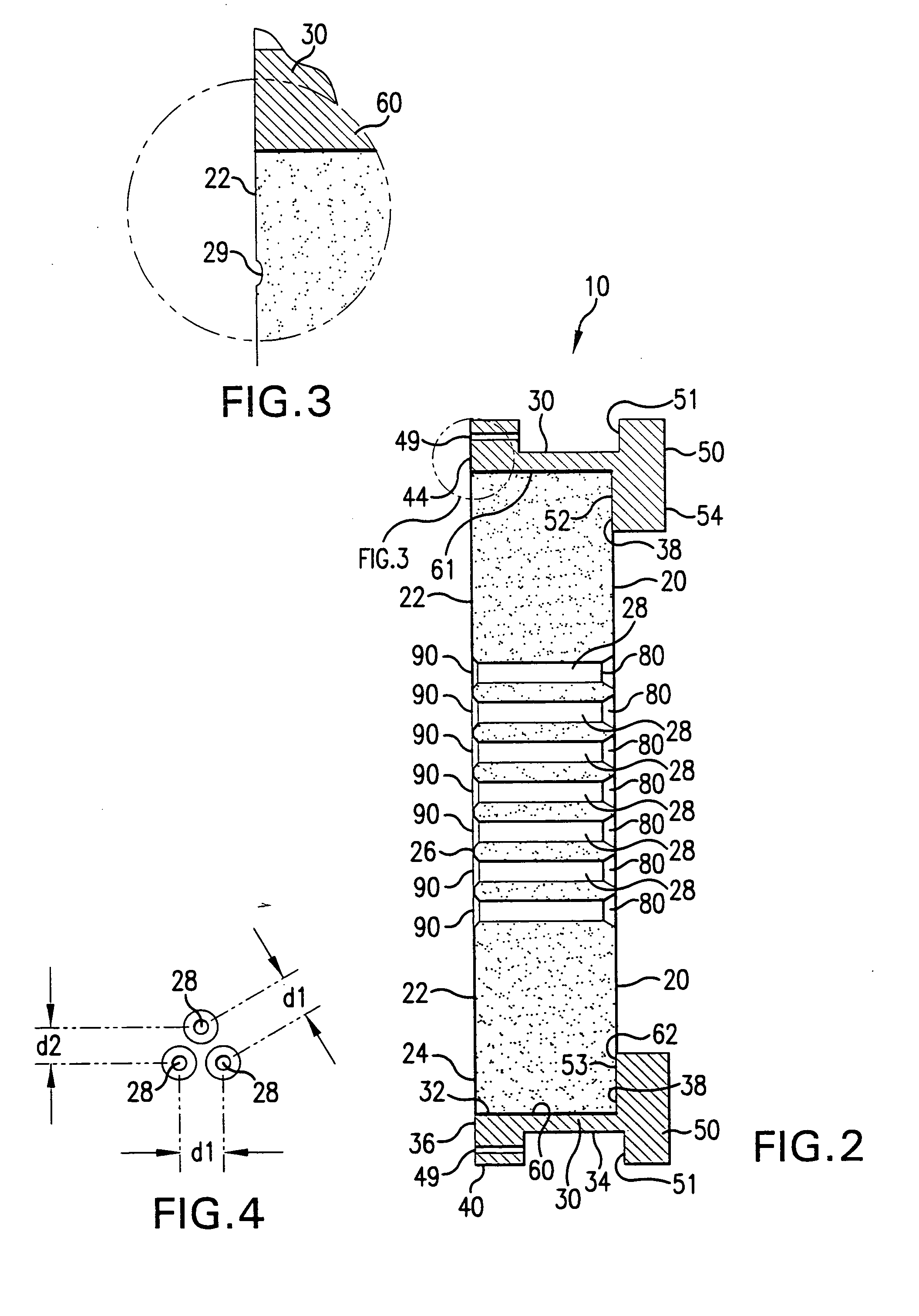Monolithic tube sheet and method of manufacture
a technology of monolithic tubes and tubes, which is applied in the direction of heat exchanger casings, heat exchange apparatus, light and heating equipment, etc., can solve the problems of further reducing steps in the assembly of heat exchangers, and achieves the effects of preventing fluid leakage, minimizing fluid leakage, and vastly simplifying the manufacturing and assembly of tube sheets
- Summary
- Abstract
- Description
- Claims
- Application Information
AI Technical Summary
Benefits of technology
Problems solved by technology
Method used
Image
Examples
Embodiment Construction
[0025] Monolithic Tube Sheet
[0026] Referring to FIGS. 1 and 2, the inventive tube sheet 10 will now be described in detail. Tube sheet 10 is a monolithic refractory ceramic plate for use in all-ceramic air-to-air indirect heat exchangers. These ceramic heat exchangers are used in medium to high temperature, and high pressure applications where metal components are unsuitable. One such application is the extraction of thermal energy from industrial waste gases for use in heating clean ambient air it is, however, within the scope of this invention to employ the inventive concept in other severe environment applications, which include, but are not limited to, those found in the power and aerospace industries.
[0027] The indirect heat exchanger of this invention allows efficient heat transfer from one fluid to another across a tube wall. A first fluid is passed through an array of parallel, elongate tubes such that it flows within the tube interior spaces. The tube array is enclosed wi...
PUM
| Property | Measurement | Unit |
|---|---|---|
| pressures | aaaaa | aaaaa |
| temperature | aaaaa | aaaaa |
| pressures | aaaaa | aaaaa |
Abstract
Description
Claims
Application Information
 Login to View More
Login to View More - R&D
- Intellectual Property
- Life Sciences
- Materials
- Tech Scout
- Unparalleled Data Quality
- Higher Quality Content
- 60% Fewer Hallucinations
Browse by: Latest US Patents, China's latest patents, Technical Efficacy Thesaurus, Application Domain, Technology Topic, Popular Technical Reports.
© 2025 PatSnap. All rights reserved.Legal|Privacy policy|Modern Slavery Act Transparency Statement|Sitemap|About US| Contact US: help@patsnap.com



